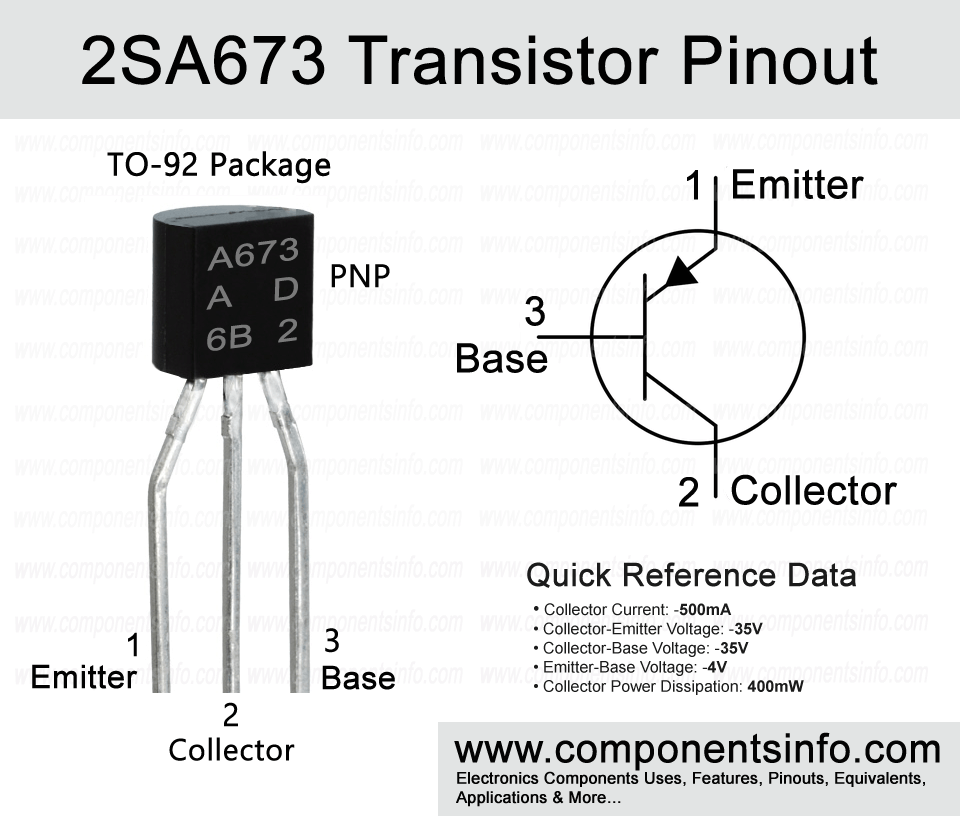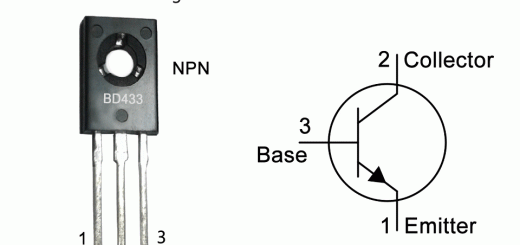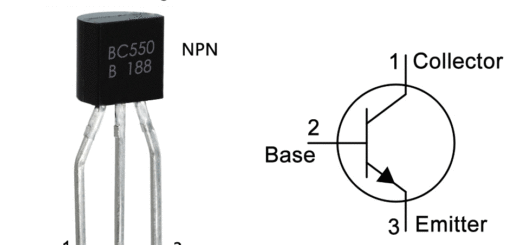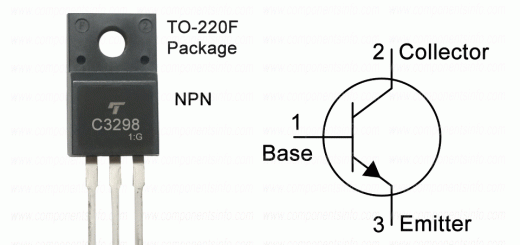2SA673 Transistor Pinout, Equivalent, Features, Applications, How to use and More
2SA673 is a PNP transistor available in TO-92 package. Today we are going to discuss about 2SA673 transistor pinout, equivalent, features, applications, how to use and other important details.
Absolute Maximum Ratings:
- Package Type: TO-92
- Transistor Type: PNP
- Max Collector Current(IC): –500mA
- Max Collector-Emitter Voltage (VCE): -35V
- Max Collector-Base Voltage (VCB): -35V
- Max Emitter-Base Voltage (VEBO): -4V
- Max Collector Dissipation (Pc): 400 miliWatt
- Minimum & Maximum DC Current Gain (hFE): 60 – 320
- Max Storage & Operating temperature Should Be: -55 to +150 Centigrade
Replacement & Equivalent
PN2905, PN3645, 2SA1625, 2SA1450, 2SA1270, 2SA1054, PN3645, PN200A, KSB1116, JC327, ECG383, BC727‑40, ECG193, BC828, BC327, 2SB987, 2SB984, 2SB734, 2SB892T, 2SB1298, 2SB1229U, 2SB1212, 2SB1059, 2SB1043, 2SB1014, 2SA998, 2SA984F, 2SA1761, 2SA1315Y.
2SA673 Transistor Explained / Description:
Here is another interesting transistor, the 2SA673, available in a TO-92 package and packed with some of the very good features such as collector current of up to -500mA, collector-base voltage of -35V, DC current gain of up to 320, and the availability of its NPN complementary transistor.
Looking at the absolute maximum ratings of the transistor: the collector-emitter voltage is -35V, collector current is -500mA, collector-base voltage is -35V, emitter-base voltage is -4V, collector power dissipation is 400mW, junction temperature is 150 °C and storage temperature is from -55 °C to 150°C.
This transistor is available in 3 different DC current gain variations, and each can be identified with the help of the alphabetic code written below the part number.
If the alphabet is B then its DC current gain will be 60 to 120
If the alphabet is B then its DC current gain will be 100 to 200
If that alphabet is D then its DC current gain will be 160 to 320.
How to Use This Transistor:
As it is a BJT (Biploar Junction Transistor), its usage procedure is same as we use any other BJT by applying signal to its base pin and connecting its emitter pin with the positive supply and receiving signal at the collector pin.
Applications:
Sensor Circuits
Audio Preamplifiers
Signal Amplification
Audio Amplifiers
Darlington Pairs
RF Circuits
Switching loads under 1A
And more…
Safe Operating Guidelines:
For safe operating the transistor here are some important guidelines:
First of all it is very important to drive the transistor at least 20% to 30% below from its actual ratings. Operating and storage temperature should be -50°C and 150°C.
Datasheet:
To download the datasheet just copy and paste the below link in your browser.
https://www.alldatasheet.com/datasheet-pdf/view/62811/HITACHI/2SA673.html



